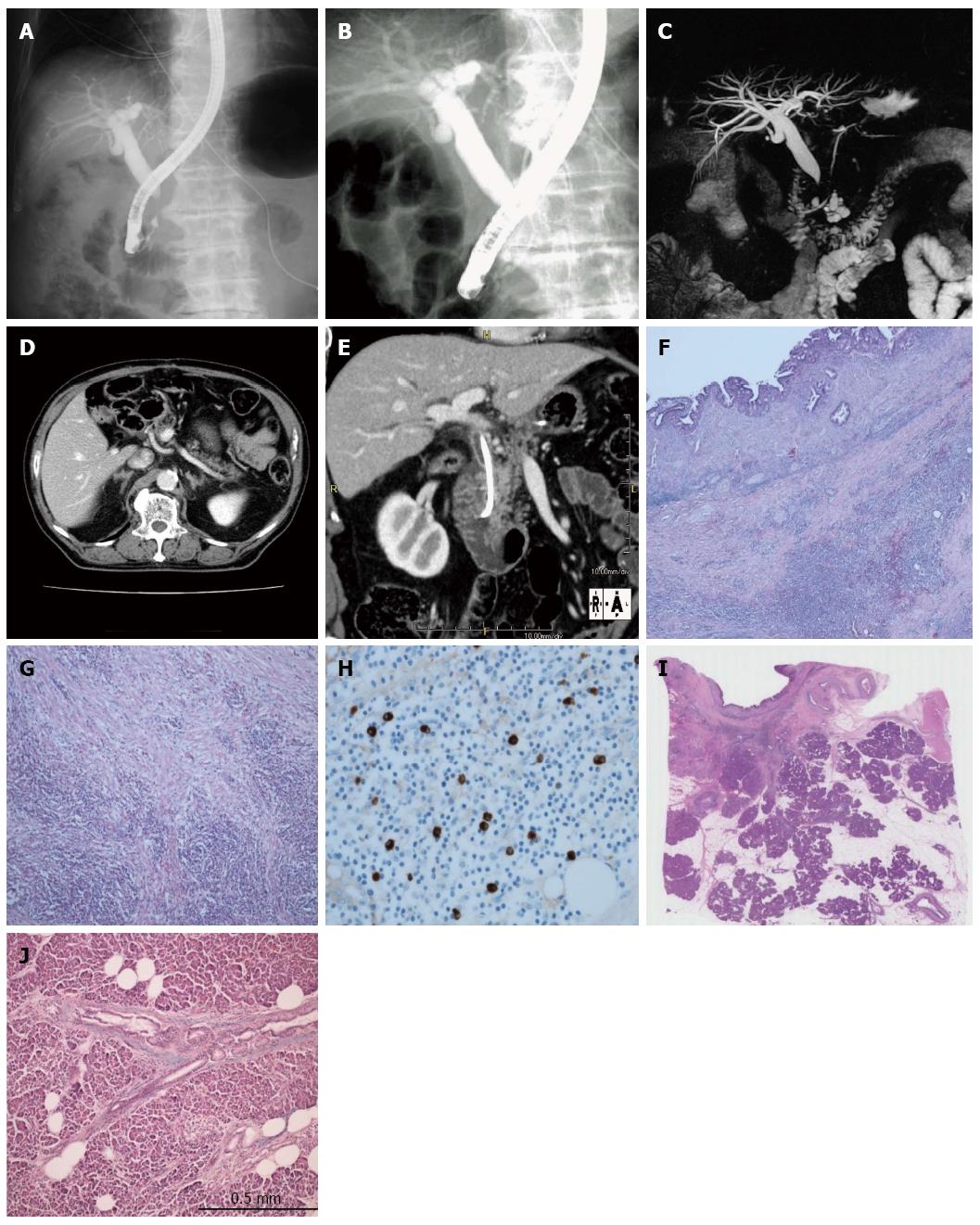Copyright
©The Author(s) 2015.
World J Gastroenterol. Jan 28, 2015; 21(4): 1334-1343
Published online Jan 28, 2015. doi: 10.3748/wjg.v21.i4.1334
Published online Jan 28, 2015. doi: 10.3748/wjg.v21.i4.1334
Figure 2 Imaging and pathological findings of Case 1.
A: Stenosis of the intrapancreatic bile duct on endoscopic retrograde cholangiopancreatography (ERCP); B, C: No irregular narrowing of the main pancreatic duct on ERCP and magnetic resonance cholangiopancreatography; D: No enlargement of the pancreas on computed tomography (CT); E: Thickening of the extrahepatic bile duct wall on CT (arrowhead); F: Bile duct wall thicking in surgical specimen of bile duct wall (HE × 40); G: Abundant infiltration of lymphocytes and plasma cells in the bile duct wall (HE × 200); H: Abundant infiltration of IgG4-positive plasma cells in the bile duct wall (IgG4 staining × 800); I, J: No findings mimicking AIP in surgical specimen of adjacent pancreatic tissue (I: HE × 2), (J: HE × 400).
- Citation: Nakazawa T, Ikeda Y, Kawaguchi Y, Kitagawa H, Takada H, Takeda Y, Makino I, Makino N, Naitoh I, Tanaka A. Isolated intrapancreatic IgG4-related sclerosing cholangitis. World J Gastroenterol 2015; 21(4): 1334-1343
- URL: https://www.wjgnet.com/1007-9327/full/v21/i4/1334.htm
- DOI: https://dx.doi.org/10.3748/wjg.v21.i4.1334









